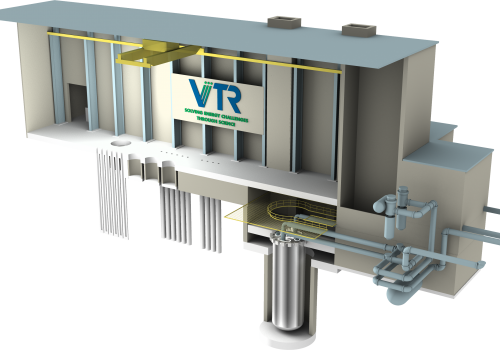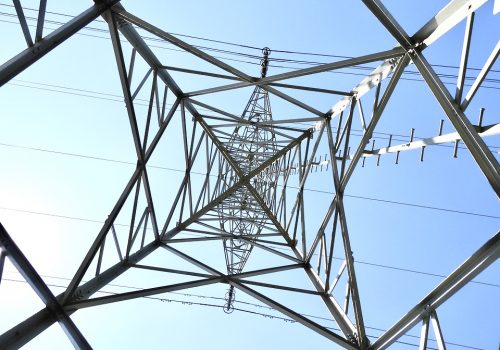Energy markets are in turmoil as a natural gas crunch in Europe has transformed into a worldwide energy crisis, affecting oil demand and triggering a dash for coal while boosting inflationary pressures as the world continues its economic recovery from the COVID-19 pandemic. With the risk of a cold winter threatening to further derail market stability and increase the human cost of energy shortages, Global Energy Center experts react to the causes of this crisis, the path ahead for energy markets, and the consequences for climate diplomacy at COP26 and the ongoing energy transition.
Energy crunch may drive a wedge between developed and developing countries
The current energy crisis is fraught with debate over the merits of renewable energy sources to limit price spikes during periods of supply uncertainty versus the risks of underinvestment in hydrocarbons—particularly natural gas—better suited to provide sufficient support for energy consumers during times of renewable intermittency.
The reality is much more nuanced. Indeed, the energy transition towards a renewable energy system is by design intended to avoid the sort of commodity market risk currently driving the crisis, along with meeting climate targets. The past month provides a valuable case study in why that is important. At the same time, the severity and rapid spread of energy price “contagion” underscores a reality that such a transition is still taking shape around the world (and likely will continue to do so for some time), meaning consideration and supply management of existing baseload power sources such as natural gas are still necessary to ensuring that a critical transformation of the energy system doesn’t go off the rails and hurt energy consumers in the process. This is especially true given gas’ role in meeting seasonal demand, which is at the center of the current crisis.
Even as the market fundamentals driving the crisis evolve over the coming months, the immediate consequences in different parts of the world will be what to watch, particularly in the lead-up to COP26. While commentary about the insecurity of fuel supply chains and the long-term potential of renewable energy resources to mitigate that insecurity plays well in many Western capitals, that’s a hard sell for countries in the developing world, many of which are highly pressed to fulfill structural energy demand in the short-term and are also more exposed to the human costs of an ongoing crisis in energy prices, especially as a cold winter approaches.
Reed Blakemore is deputy director at the Atlantic Council Global Energy Center.
Governments must pursue a “both/and” approach to hydrocarbons and renewables
The current global energy crisis, specifically the dramatic spike in natural gas prices in Europe and Asia, the resurgence of coal demand as a price response, and the shuttering of industrial production in China due to insufficient fuels supply, highlights the need for a more effective political strategy to achieve climate, security, and resiliency goals simultaneously. The current crisis derives largely from the resurgence of energy demand as major economies reopen (which is good) and the still lagging oil and natural gas supply which resulted from the COVID demand collapse (which is not). The supply gap is temporary, and the natural ebb and flow of the market will fix itself in time. Even so, the crisis highlights how fragile the political support for climate action is in the face of a sudden escalation in energy prices. Democratic administrations have had to relearn this lesson over and over, first after Kyoto, and then midway through President Obama’s first term. In today’s malaise, spiking gasoline prices and projected high winter heating costs are already weighing heavily on US consumers at a fragile moment of the post-COVID economic recovery. Invariably, American politicians and consumers will rebel against spiking prices for energy. At the same time, Americans are growing increasingly wary of extreme weather and the tell-tale signs of worsening climate change impacting their daily lives and livelihoods.
In the near-term, the most sensible solution to prevent similar crises is to have a “both/and” rather than an “either/or” strategy for climate action. Certainly, the US needs net-zero and zero emission power sector goals, with funding to accelerate the technologies that will achieve that goal, and US consumers and industrial customers need adequate supply of natural gas and other hydrocarbons as we navigate that transition. It would be constructive if the United States recognized the important role that natural gas plays in the energy transition here at home and especially in the developing world. Importantly, White House Press Secretary Jennifer Psaki acknowledged the utility of liquefied natural gas (LNG) exports to provide reliable fuel supply to our allies overseas, support that had been hesitant at best until very recently. Looking ahead, the administration needs to more fully acknowledge the utility of blue hydrogen (specifically, gas paired with carbon capture) as well as green hydrogen production methods to scale what will likely be a key facilitator of industrial decarbonization (and that of other sectors). Further, it should recognize that the speed of the energy transition in the developing world still depends on the cost of alternative supplies to coal. The current crisis has made clear that no amount of urgency, or even catastrophe, will create the political will to switch unless alternatives are affordable and available to purchase.
Adequate supply of a wide range of fuels, diversification, strategic reserves, and demand side management are all critically important to crafting a viable energy transition. A political strategy that prioritizes energy security in its proper role, both at home and abroad, while we commit to deeper decarbonization, ensures that we do not let the perfect become the enemy of the good.
David Goldwyn is chair of the Energy Advisory Group at the Atlantic Council Global Energy Center and chief executive officer at Goldwyn Strategies.
Gas isn’t permanently cheap, and the crisis proves it
Since prospectors first discovered significant gas reserves about ten years ago, the notion that natural gas is cheap has become axiomatic. But what the current energy crisis should demonstrate is that any energy source can either be cheap or expensive, depending on a range of events and policies that each contribute to determining energy prices. If natural gas prices can suddenly soar—due to a range of factors that include price manipulation, geopolitical tensions, and black swan-type events—it is just as likely that policy choices (a method of putting a price on carbon, for example) could flip the current paradigm, in which natural gas is generally cheap while nuclear is considered expensive, at least in deregulated markets. There are an incredible number of inputs beyond simple supply and demand that affect whether an energy source is considered expensive or cheap, and a serious global commitment to net zero by 2050 may change what we think we know about energy prices.
Jennifer Gordon is managing editor and a senior fellow at the Atlantic Council Global Energy Center.
Russian malfeasance bears responsibility for high gas prices
There are many reasons for today’s energy crisis in Europe and globally, but a key one is Russian weaponization of gas supply, which is partly responsible for the huge spike in gas prices. As International Energy Agency Director Fatih Birol recently pointed out, Russia could alleviate the problem by supplying more gas. Russia may well be in de jure compliance with its gas supply agreements, but it is in a position to provide more. President Putin and others have said that if Germany and the EU quickly give regulatory approval to the controversial Nord Stream 2 pipeline, the problem would quickly be solved. President Putin has also said that the price escalation has been caused by the volatility of LNG spot market prices and the answer is long term fixed price contracts, which would be to Russia’s benefit.
The present situation demonstrates the difficulty of implementing the joint statement reached between Germany and the United States a few months ago relating to Nord Stream 2. That understanding said in part that the United States and Germany would take action if Russia used energy as a political weapon, with sanctions a distinct possibility. A strong argument can be made that Russia’s recent actions constitute such malign activities. But it is unlikely that the United States and Germany would agree that to be the case, and even if they were to agree, it is unclear what the appropriate action would be. It is also possible that Russia is overplaying its hand. Russia’s failure to cooperate in overcoming the crisis could lead to an even stronger European commitment to find alternative sources and to implement the energy transition as quickly as possible, all of which would lessen dependence on Russian gas.
Richard L. Morningstar is the founding chairman of the Global Energy Center and a board director at the Atlantic Council.
To prevent future energy crises, clean baseload power is key
There are limits to what can be done in the short run to alleviate natural gas shortages and the resultant price shocks for natural gas and electricity. There are, however, options in the long run to alleviate future price shocks. This is where energy and other leaders in the UK and the EU should look.
Nuclear is a low-emission, baseload energy source that has an excellent record of reliability. It is also one of the safest energy sources per megawatt-hour historically. If more nuclear plants were in operation in the UK and the EU, these extreme price shocks in fossil fuels might have been mitigated. Moreover, setting nuclear plants up for cogeneration, which would capture the heat from the reaction and deploy it for uses like district heating and desalination, would improve energy efficiency in a circular manner.
Geothermal electricity is another source of reliable baseload energy, but it is also renewable. Geothermal heat pumps can be used anywhere and can reduce the demand for other energy sources of heating and cooling in buildings, as well as in district heating and cooling. There are many places in the UK and the EU where geothermal energy could have been developed.
The energy transition will not be easy. In the long run, the UK and the EU can reduce the chances of price shocks in the future with better planning and investments in nuclear and geothermal, along with the many other sources of clean dispatchable power.
Paul Sullivan is a nonresident senior fellow at the Atlantic Council Global Energy Center.
As global energy demands grow, the transition must prioritize stability of supply
The current energy crisis provides an important window into what is to come if we do not adjust our energy transition policies to account for the reality of the energy security situation. The transition towards renewable energies is not the only reason for the current energy crunch, but it is a key contributing factor and, more importantly, one which we can correct before power shortages become commonplace.
If we are truly committed to reducing pollution and greenhouse gas emissions, the most important thing we can do is limit the use of coal in power generation. This means building more nuclear power plants instead of closing them down and investing more money and resources in natural gas production and transportation. It also means planning for easily predictable downtimes for solar and wind by ensuring adequate supplies of natural gas and a stable source of nuclear power. Otherwise, we will increasingly face an unpleasant choice between power outages or the burning of coal and oil.
When world leaders and policy makers meet in Scotland at the COP26 summit, they must address the reality that our modern lifestyles require power generation and energy that is reliable and regularly abundant. Our global energy demands will only grow, so any transition that results in a net loss of power generation will significantly exacerbate situations like the one we currently face.
Ellen R. Wald is a nonresident senior fellow at the Atlantic Council Global Energy Center and the president of Transversal Consulting.
Increase clean investment to escape the commodity price cycle
Gas has long been viewed has a key piece of energy security, but this crisis shows the limits to which gas—and coal, which also faces critical shortages—can ensure energy security.
In the short term, the supply shock does demonstrate the security value of fossil fuel supplies, and it may drive support for increased gas production. That’s why we’ve seen a rush to produce more coal and to secure more long-term LNG supply agreements. Energy security relies upon stable fuel supply, so a push to secure or produce more supply seems a natural reaction to the crisis.
But in the longer term, the supply crunch in the gas and coal markets highlights the vulnerabilities inherent in fossil fuel supply chains. Make no mistake: this crisis is because of fossil fuel reliance. Low wind power generation in Europe this summer may have contributed to gas drawdown, but the gas market dynamics—with producers recouping profits after a year of pandemic-driven losses and accelerating gas’ commodity cycle—are driving the crisis more than an unforeseen drop in renewable production or insufficient investment into fossil resources. In the long term, a power grid less reliant on that market would be less prone to the unprecedented price spikes currently squeezing importers. The crisis may thus discourage developing countries from downstream gas development and reliance on an increasingly volatile fuel market that is prone to disruption.
As climate impacts worsen, the risk of supply disruptions and energy crises will rise. Diversifying away from vulnerable fossil supply chains and toward renewable energy technologies can blunt the impact, however: the IEA’s World Energy Outlook found that a rapid global transition toward renewable energy can reduce the household costs of a commodity price shock in 2030 by 30 percent through reduced reliance on oil and gas brought on by electrification and energy efficiency improvements. What renewables offer—particularly over the long term as their share of generation increases and as battery capabilities and clean baseload technologies, like advanced nuclear, improve—is greater independence from insecure fuel supply chains.
There will be no winners this winter—except, perhaps, the balance sheets of major oil and gas producers—as energy shortages drive blackouts and strain energy systems around the world. The human impacts will be terrible, especially in countries hardest-hit by COVID-19. Some will say that the answer to this crisis is to redouble gas production, but blame at the feet of renewable energy and climate action will be misplaced. The crisis instead demonstrates the need to inject investment into clean power resources—from solar, wind, and batteries to advanced nuclear, geothermal, and beyond—that can support a clean power system more insulated from volatile and manipulable fuel supply chains.
Take any suggestion that the current supply crunch shows the need for more gas—rather than demonstrating its limitations and the risk of heavy reliance—with several pinches of salt.
David W. Yellen is an assistant director at the Atlantic Council Global Energy Center.
Related content
Learn more about the Global Energy Center
Image: Drivers line up at a gas station in the UK. (Philafrenzy, Wikimedia, Creative Commons Attribution-Share Alike 4.0 International) https://creativecommons.org/licenses/by-sa/4.0/





